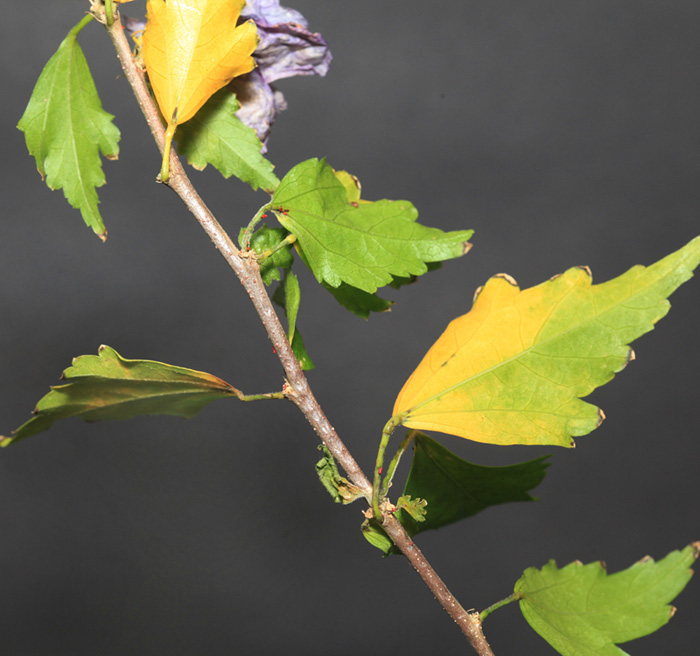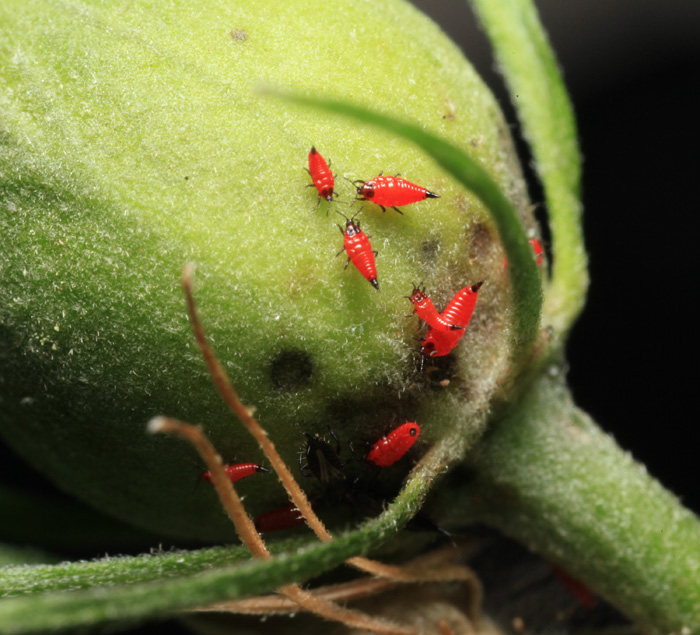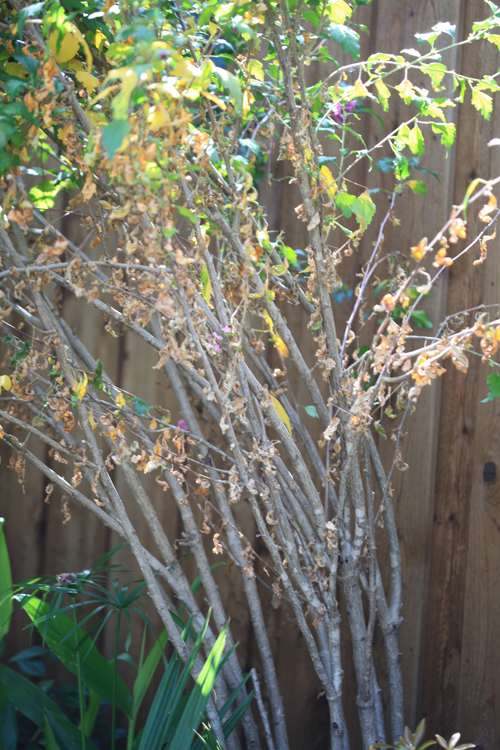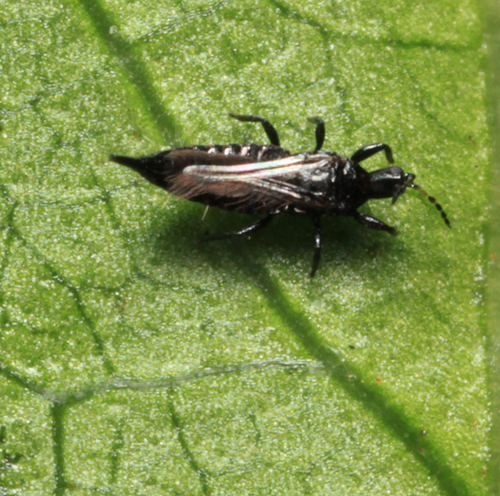
Hollyhock thrips damage to Althea observed in Dallas, TX. Notice the tiny red thrips on the leaves and petioles of the plant. Damage progresses from yellowing to death of plant leaves. Click image for larger view.
It’s not too often that I come across an insect that appears to not have been previously recorded in Texas. But thanks to the sharp eyes and instincts of Johnette Taylor of Roundtree Landscaping in Dallas, I’ve added a new plant pest to my “life list”.
Johnette was a little suspicious when a customer reported that an Althea (rose-of-sharon) that she had planted several years ago was yellowing and losing leaves. She noticed some small red insects covering the bark of the trunks, and took a picture with her phone. After an exchange of emails and an initial wrong guess on my part, she asked if it could be a tube-tailed thrips. I admitted that I had never heard of tube-tailed thrips, but after checking into that possibility, I agreed.

Immature hollyhock thrips feeding on an Althea flower bud. Note the dark sunken areas on the bud, apparently where the thrips have fed. Click on image for a larger view.
With a little more online research, and the help of a Florida colleague, and I felt pretty sure about the pest’s exact identity. The hollyhock thrips, Pseudophilothrips (=Liothrips) varicornis, are striking insects. The nymphs are fire engine red, with a sharp black tail. Unlike most thrips, which feed mostly out of sight, inside leaf and flower buds, these insects congregate on the bark, leaves and petioles of the plant. Like all thrips, they have rasping/sucking mouthparts, so the feeding damage is not loss of leaf tissue, rather it will be dark feeding lesions or pits, and yellowing or death of whole leaves.
The hollyhock thrips is thought to be native to California. I could find little about it apart from a nice taxonomic key entry, and a reference to a 1938 paper that records it as causing feeding lesions on plants in the mallow family including Althea, Hibiscus, Sida and Sphaeralcea. The plant I examined did indeed have feeding lesions along the leaf petioles, and the feeding did certainly seem to cause severe damage. There were grayish lesions on both flower buds and leaf petioles, and leaf death was most apparent on the lower branches of the shrub.
I don’t know if this insect is relatively new to the Dallas area, or something that’s been here for a long time, flying under the radar. Because of the dramatic damage to the one bush I examined, I’m guessing it may be something new, because gardeners tend to report such things. I would be interested if anyone else is seeing this insect on their mallow plants.

Damage by the hollyhock thrips seems to progress from leaf yellowing to death, as seen on the bush I examined this week.
If you do encounter this thrips, you have several control options. The homeowner I spoke to was having some success with an organic plant oil spray. For this to work, you will have to spray multiple times and make sure you cover all sides of all of the infested plants. I would expect synthetic horticultural sprays to work just as well. Another low-impact spray option would be sprays containing the bacterial-derived insecticide, spinosad. I have not tested this product on this thrips, but spinosad is generally very effective on thrips. Other sprays labeled for thrips control may also produce good results.

